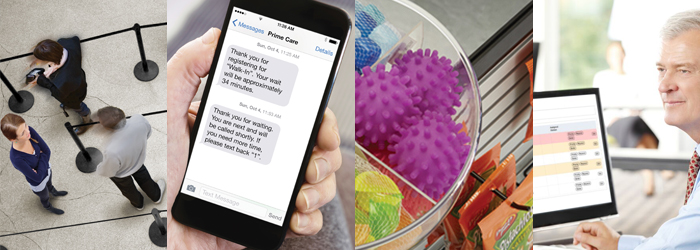
4 medidas de las filas de espera que usted debe entender

A customer’s experience in a store or service environment isn’t over once they reach the waiting line. In fact, for many, their wait in line is the true test of the total experience, which is why checkout lines can have a dramatic impact on sales. Studies have shown that a customer’s perception of the service they receive is tremendously impacted by their checkout time. And there are consequences to a customer who is feeling unhappy, ignored, or insignificant in the queue.
How a Long Line Impacts Sales
There are three ways in which long checkout lines impact sales:
- Cart abandonment. If the line is too long, a customer may leave the checkout line, simply abandoning their cart wherever it stands.
- Put-backs. Some customers don’t even reach the checkout line because the lines look too long. They simply put items back on the shelves and leave.
- Drive-bys. Getting a customer in the front door is a challenge for some stores who deal with queue issues. If a line looks too long, a customer may not even bother setting foot in a store.
These on-site behaviors impact revenue, but it’s also what happens when a customer leaves a store that can affect the bottom line. Word of mouth is a powerful influence, and people will complain to friends and family about their negative experience. Only a small percentage of dissatisfied customers will actually voice their complaints to the store or company itself, but nearly half of the people in a survey have avoided stores completely because of someone else’s bad experience.
Be Proactive About Checkout Line Conditions
Wise retailers manage their queues carefully and thoughtfully. But traditional methods used to measure checkout times and customer satisfaction pose serious drawbacks. Inadequate sampling and observer bias produces skewed results, often overlooking elements such as abandoned carts and drive-bys and only presenting a snapshot of a moment in time which fails to include pertinent facts like time of day, store conditions (crowded, slow, chaotic), customers’ “value levels,” and other subtle factors. Technologically advanced behavior measurement systems, on the other hand, can provide causative insight into what drives customer satisfaction. Data can aid retailers in proactively identifying potential sources of customer complaints; simulate real-life customer behavior when influenced by store conditions and other important elements; and offer non-biased behavioral information that would not be gleaned from traditional surveys, mystery shoppers, or POS data. Retailers have to be one step ahead of the customer, proactively managing the checkout process and every worst-case scenario. Using available technology to capture appropriate metrics along with real-time and historical data eliminates the limitations and biases inherent in traditional methods.
Capturing and Understanding Essential Metrics

Effective customer service management can result from a full-scale customer service improvement solution that uses technology to capture the following metrics:
-
- Queue monitoring captures the number of customers in the checkout line, the average wait time, and instances of queue abandonment.
- Proactive queue management integrates open cashier stations with checkout line conditions to predict wait times and service breakdowns before they occur.
- Transaction time monitoring simply tracks the length of customer transactions.
- Traffic counting tallies the number of customers who walk into a store or specific departments and integrates this information with the POS to determine an accurate conversion rate.
There’s more to queue metrics than just tracking the number of people who walk through the door. The most effective customer management systems should be equipped to combine traffic counting results with other data, such as the average time customers spend in the store. Knowing this detail, for example, will allow a queue metric system to predict periods of peak activity at the checkout based on arrivals. The result: More lanes can be opened before a rush occurs, thereby circumventing any lost sales caused by long lines, cart abandonment, or put-backs. Checkout time cannot be overlooked – this crucial element of the customer experience influences market share, customer retention, stock prices, and the top and bottom line results. Learn more about how to integrate queue metrics into your checkout system by speaking with an expert at Lavi.
SUSCRIBIRSE
Suscríbase para mantenerse al día con los nuevos productos, información y noticias sobre los recursos.
ENTRADAS DE BLOG RECIENTES
Theft at the Register: How Strategic Queue Design Protects Profits
Leer el artículo completoRapid Deployment Crowd Control: JetTrac Portable Barriers For The Biggest Spaces
Leer el artículo completo4 Psychological Reasons Your Customers Hate Waiting In Line
Leer el artículo completoFrom Bleachers To Bookstores: 4 Campus Crowd Control Solutions
Leer el artículo completo








